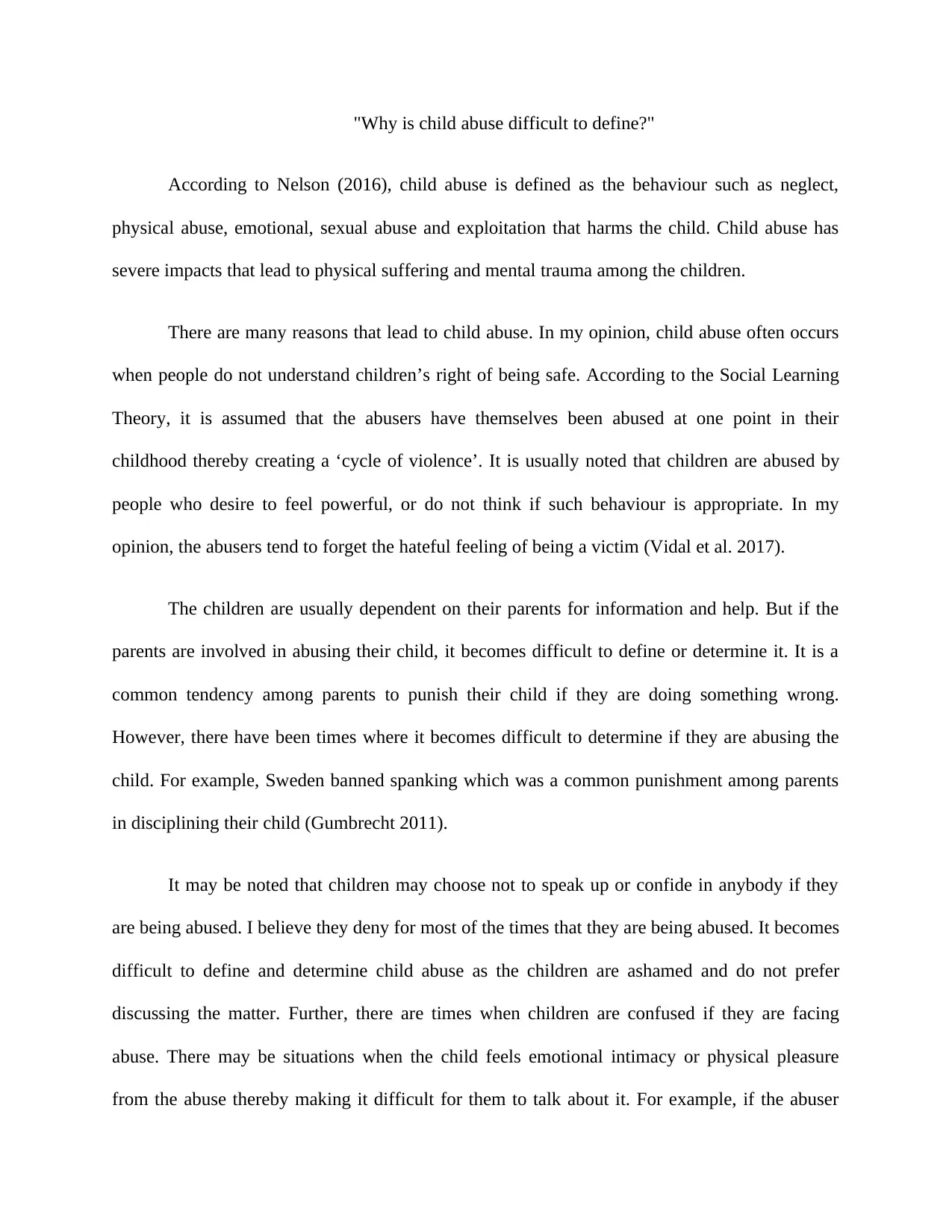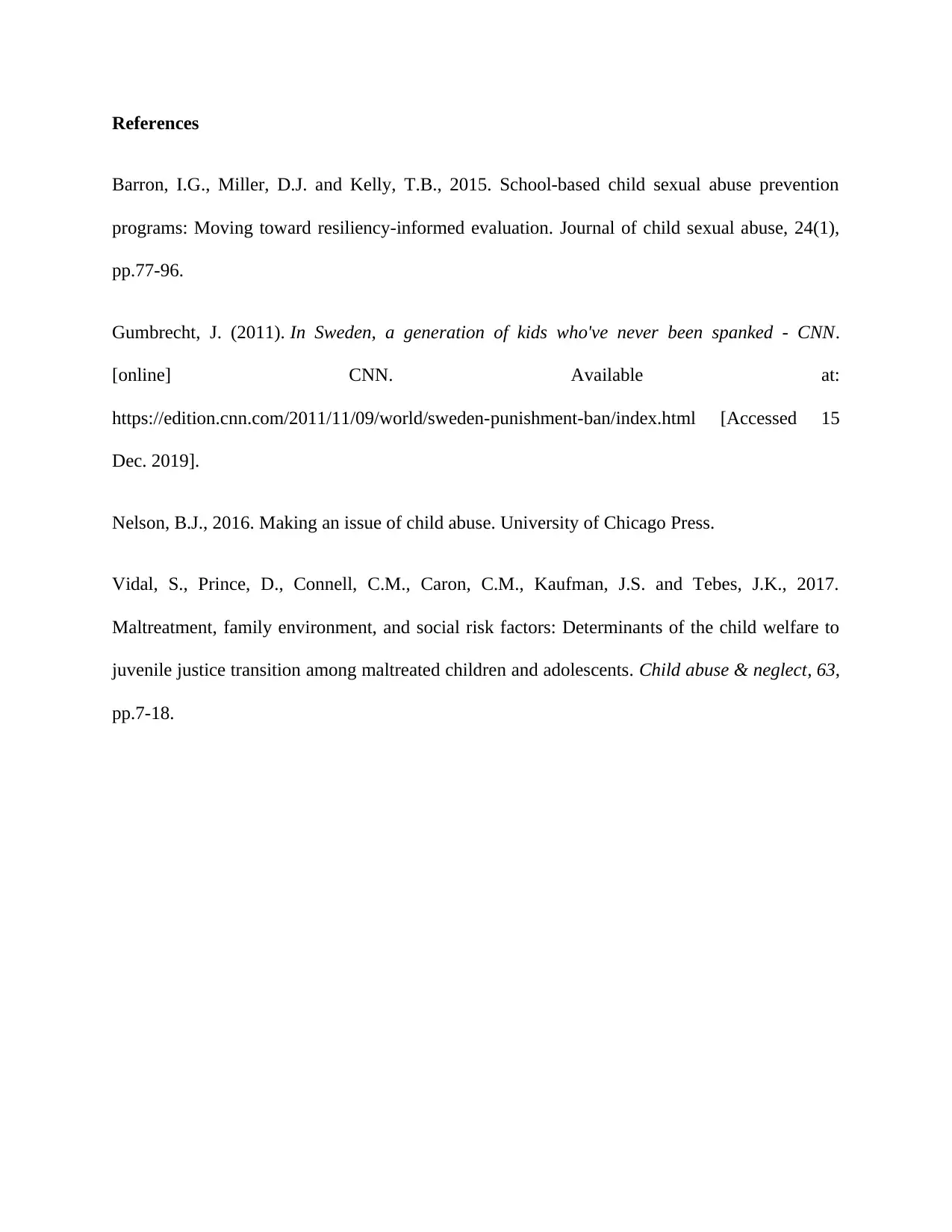Understanding the Challenges in Defining Child Abuse Clearly
VerifiedAdded on 2022/09/08
|3
|728
|24
Essay
AI Summary
This essay delves into the complexities of defining child abuse, highlighting the various factors that contribute to the difficulty in its identification and determination. It begins by defining child abuse as encompassing neglect, physical, emotional, and sexual abuse, along with exploitation, all of which inflict physical and mental harm on children. The essay posits that a lack of understanding of children's rights and the 'cycle of violence,' as explained by the Social Learning Theory, are significant contributors to child abuse. The author argues that children's dependence on parents, coupled with parental involvement in abuse, further complicates the definition. The essay also addresses the reluctance of children to report abuse due to shame, confusion, or fear of disbelief. Drawing from personal experience, the author illustrates the long-term mental trauma resulting from child abuse and emphasizes the importance of supportive relationships in fostering resilience, referencing the resilience theory. The essay concludes by reinforcing the multifaceted challenges in defining and addressing child abuse effectively.
1 out of 3










![[object Object]](/_next/static/media/star-bottom.7253800d.svg)